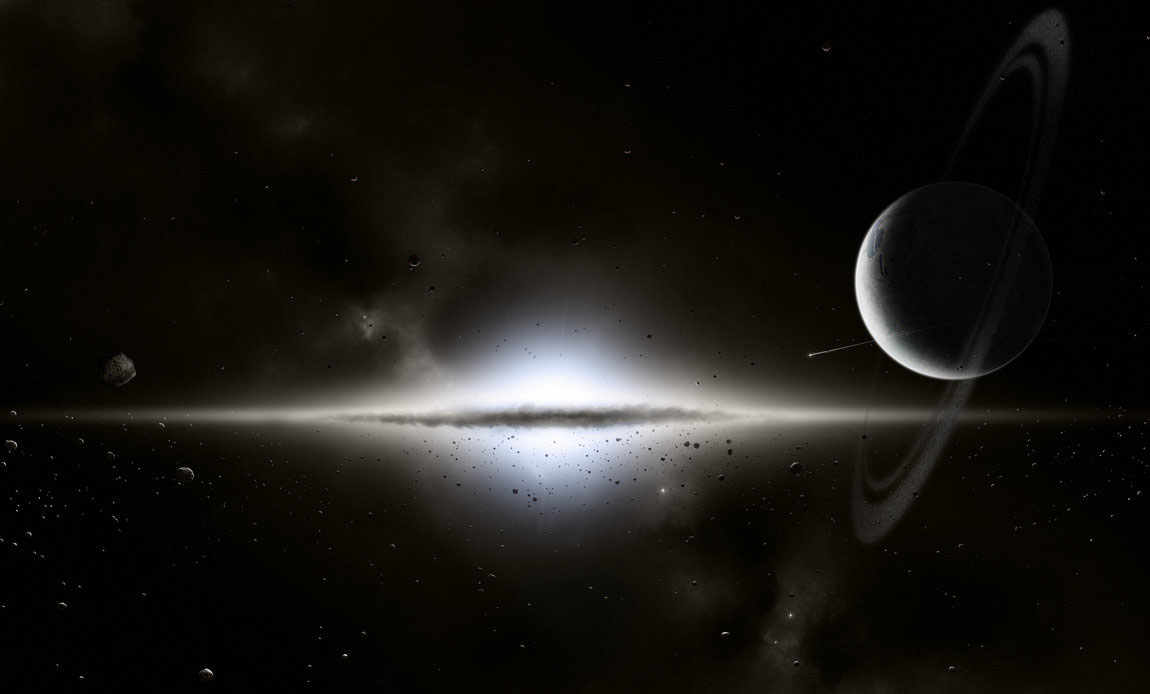the birth of a supermassive monster, revisited

We know that black holes can grow to become absolutely enormous in size, tipping the scales at billions and billions of times the mass of our sun. The numbers involved make the gravitational monsters in question very hard to visualize, and pose a big mystery. Did they form from the remnants of the first stars and just kept on growing, or did they coalesce from primordial clouds of gas and dust and were in effect, born this big in the first place? After all, a black hole with a billion solar masses should take up most of our solar system in size, spinning an entire galaxy around it. To get that huge would mean it survived a lot of collisions, eating far more than its share of stars and gas in a process that would’ve taken billions of years. And yet, young galaxies have immense black holes seemingly right off the bat so slow and steady growth might not have been possible. To get an idea of what might’ve happened at the dawn of the universe’s first supermassive black holes, we could turn to a simulation which considers what happens when two young, calm, and gas rich galaxies collide.
Billions of years ago, as the galaxies were closer together, frequent collisions were almost inevitable. Even in our relatively calm, more mature universe, galactic collisions happen all the time. So take a galaxy with a core made up of what we’ve generally thought galactic cores were made of, millions of solar masses of humdrum gas and dust, and slam it into another galaxy just like it. Since galaxies can just pass through each other due to their low density of stars and planets, they would first move past each other’s positions in space at the time of impact (so to speak), then, trapped by each other’s gravity, they’d recoil back. Oscillating back and forth on a timescale of millions of years, the gas at the core of each galaxy begins to heat up and churn as these cores merge. When all that gas and dust collapse under their own gravity and heat, they weigh far too much to form new stars and instead, collapse straight into a giant black hole, overcoming the degenerate pressure that keeps many supernovae from swallowing themselves into a gravitational ghost. The giant new black hole quickly starts to feed and lights up the settling galaxy around it into a quasar. So far, so good.
This simulation ran by astrophysicists from the University of Zurich, the University of Chile, and The Ohio State University, fits very neatly with the timescales and the observational evidence for supermassive black holes at the dawn of inflation and galaxy formation. Now, the mystery isn’t exactly solved, but this is a great example of when computer simulations really do pay off in stark contrast to the last much publicized simulation, said to explain Jupiter’s small core with a super-Earth impact. Here we know the initial conditions (hot, dense, and a lot of gas-rich proto-galaxies relatively close to each other), the end result (quasars with huge black holes at their cores), and the approximate time frame for all this to happen. The simulation’s data gives us a possible, and well supported, scenario from which we can derive hypotheses to be backed up or refuted by observation in the future. In other words, what we have here is great, computer-aided science in action. According to what this simulation tells us, the first satellites designed to detect gravitational waves should be able to pick up an impressive number of ripples making their way across the cosmos from these sudden and violent gas cloud implosions. And if that’s what they ultimately confirm, we know the simulation may be a viable theory.
See: Mayer, L., et al (2010). Direct formation of supermassive black holes via multi-scale gas inflows in galaxy mergers Nature, 466 (7310), 1082–1084 DOI: 10.1038/nature09294





